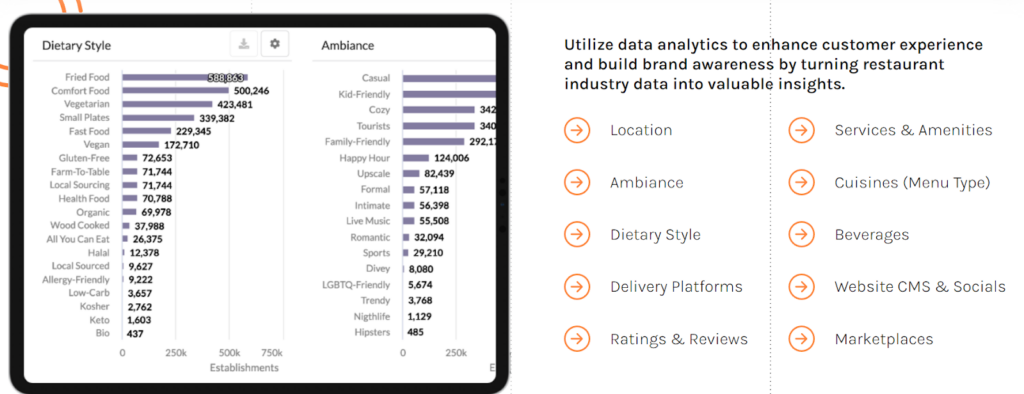
Managing a supply chain or running a food business can be challenging. It can be difficult to understand exactly what drives sales and improves operations. Leveraging data analytics has been a game-changer, boosting revenue for 80% of businesses.
In this guide, we’ll simplify restaurant data analytics and how these insights can directly benefit your business, helping you make informed decisions that lead to growth.
You need restaurant data analytics to understand and grow your business. For food service professionals, whether you’re managing a single location or a chain of restaurants, these analytics offer a comprehensive view of your operations, helping you make informed decisions.
At its core, data analytics in the food industry involves collecting and interpreting data from various sources, including POS systems, customer feedback, and inventory levels. This process transforms raw data into actionable insights, enabling you to understand customer preferences, optimize your menu, manage inventory efficiently, and ultimately boost your revenue.
One of the key benefits of using restaurant analytics is the ability to identify and respond to trends quickly. For instance, data can reveal the most popular menu items, allowing you to adjust your offerings accordingly. It also helps you manage inventory more effectively, reduce waste, and ensure that popular items are always in stock.
Moreover, restaurant data analytics can significantly enhance customer experiences. By analyzing data on customer preferences and behaviors, you can tailor your services to meet their needs more precisely. This could mean personalizing marketing efforts, improving service speed, or even tweaking your menu to cater to popular tastes.
Food and beverage manufacturers, distributors, and restaurant tech professionals all benefit from restaurant data analytics. They affect food service’s entire supply chain and technological landscape, not just the restaurant industry. Here are some key benefits:
Through restaurant data analytics, stakeholders in the food and beverage industry can gain a competitive edge, ensuring their products and services are aligned with market demands and customer needs. Brizo FoodMetrics’ market intelligence platform can help you harness these analytics with a comprehensive restaurant database and market insights.
Leveraging restaurant analytics data is a powerful strategy to increase revenue for food and beverage manufacturers, distributors, and restaurant tech companies.
Food and beverage businesses can significantly benefit from Brizo FoodMetrics’ market intelligence platform. Here are specific ways to use this data:

Brizo FoodMetrics goes beyond a simple restaurant database; it’s a gateway to informed decision-making for food businesses.
Restaurant data analytics are essential for growth in the food and beverage industry. It helps make smarter decisions based on customer trends and market demands. Businesses can gain a competitive advantage by understanding customer preferences, optimizing supply chains, and enhancing product offerings.
Brizo FoodMetrics complements this need by providing a Foodservice market intelligence tool that simplifies the process of transforming complex data into practical, actionable insights. Here’s how Brizo FoodMetrics can specifically support your business:
Explore how Brizo FoodMetrics‘ market intelligence platform can be part of your strategy for a successful and growing business.